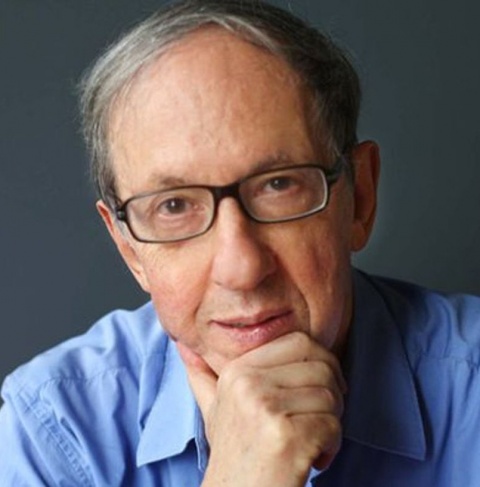Columbia College | Columbia University in the City of New York
Robert A. Gottlieb ’52, Publishing Giant and Editor Extraordinaire

Gottlieb edited novels by, among many others, John le Carré, John Cheever, Michael Crichton, Anne Rice, Salman Rushdie, Toni Morrison, Anthony Burgess, Joseph Heller, Doris Lessing and Chaim Potok; science fiction by Michael Crichton and Ray Bradbury; histories by Robert Caro, Antonia Fraser and Barbara Tuchman; and memoirs by President Bill Clinton, Lauren Bacall and Katharine Graham.
“Bob had a kind of split personality as an editor: He pursued high culture and low culture with equal intensity and seemed to enjoy both,” Simon & Schuster colleague Michael Korda wrote in his 2000 memoir, Another Life: A Memoir of Other People. “More extraordinarily, he was good at both.”
“He wasn’t just an editor, he was the editor,” le Carré told The New York Times. “I never had an editor to touch him, in any country — nobody who could compare with him.”
For three decades at Simon & Schuster and Knopf, where he was president as well as editor-in-chief, Gottlieb turned hundreds of manuscripts into well-received books, many of which sold millions of copies, won awards and made authors wealthy and famous. Then, in 1987, he stepped from the relative anonymity of book editor to the spotlight of one of journalism’s highest profile jobs when he was named editor of The New Yorker.
It was a controversial move because he was following William Shawn, a highly popular editor who had been in place for 35 years. But rather than instill radical changes, Gottlieb stayed the course at the venerable magazine, making few and mostly minor moves during five years of stewardship. He brought in several new contributors and critics, including Raymond Bonner, Judith Thurman and Diane Ackerman, and added fiction by Robert Stone and Richard Ford. Importantly, he maintained the tenor of the signature “Talk of the Town” section and did not shorten the lengthy articles that are the magazine’s staple.
In 1992, he turned over the reins of The New Yorker to Tina Brown and resumed editing for Knopf, where he stayed for the remainder of a career that spanned seven decades.
In a 2016 memoir, Avid Reader: A Life, Gottlieb addressed his decision to pursue a career as an editor rather than writer. “There are editors who will always feel guilty that they aren’t writers,” he explained. “I can write perfectly well — anybody who’s educated can write perfectly well. It’s very, very hard, and I just don’t like the activity. Whereas reading is like breathing.”
He most enjoyed reading the writing of others and shaping it into finished products, and was happy behind the scenes while the spotlight shone on the writer. “This glorification of editors, of which I have been an extreme example, is not a wholesome thing,” he told The Paris Review. “The editor’s relationship to a book should be an invisible one. The last thing anyone reading Jane Eyre would want to know, for example, is that I had convinced Charlotte Brontë that the first Mrs. Rochester should go up in flames.”
Born in Manhattan on April 29, 1931, Gottlieb grew up on the Upper West Side and attended the Birch Wathen School. As a teenager, he said he read Tolstoy’s War and Peace in a day and Proust’s Remembrance of Things Past in a week. “I would read three to four books a day after school, and could read for 16 hours at a time,” he told the Times in 1980. “That’s all I did. I belonged to three lending libraries and the public library.”
After majoring in literature studies and achieving Phi Beta Kappa honors at the College, Gottlieb earned a postgraduate degree from Cambridge in 1954 and began at Simon & Schuster the following year as assistant to the editor, Jack Goodman. He became senior editor in 1957 and editor-in-chief in 1965. Among his most notable efforts there was editing Heller’s Catch-22, which became an anti-war classic. The book’s original title was Catch-18, but Gottlieb changed it for two reasons: Leon Uris was writing Mila 18 at the time and two novels with 18 in their titles would confuse readers, and he thought 22 was a funnier number than 18 anyway.
Three years later Gottlieb moved to Knopf, where he began a relationship with Caro that would last more than 50 years. He carved 400,000 words from the draft of Caro’s epic biography, The Power Broker: Robert Moses and the Fall of New York, the two often working side by side and squabbling over semicolons. The book, which still came in at more than 1,200 pages, won a Pulitzer Prize and has had 66 printings.
Despite their professional disagreements, or perhaps because of them, Gottlieb and Caro developed a lasting friendship and collaborated on Caro’s five-volume biography of President Lyndon B. Johnson. “I have never encountered a publisher or editor with a greater understanding of what a writer was trying to do — and how to help him do it,” Caro said in a statement upon Gottlieb’s death.
Although he considered himself an editor first and foremost, Gottlieb did write several books including biographies of choreographer George Balanchine and actors Sarah Bernhardt and Greta Garbo. He also was a dance critic for The New York Observer, wrote articles for The New York Review of Books and other publications and compiled anthologies on dance and music.
Gottlieb’s first marriage, to Muriel Higgins, ended in divorce. He is survived by his second wife of 54 years, Maria Tucci; sons, Roger and Nicky; daughter, Lizzie; and two grandchildren.
— Alex Sachare ’71
Issue Contents
Published three times a year by Columbia College for alumni, students, faculty, parents and friends.
Columbia Alumni Center
622 W. 113th St., MC 4530, 6th Fl.
New York, NY 10025
212-851-7852
cct@columbia.edu
Columbia Alumni Center
622 W. 113th St., MC 4530, 4th Fl.
New York, NY 10025
212-851-7488
ccalumni@columbia.edu

